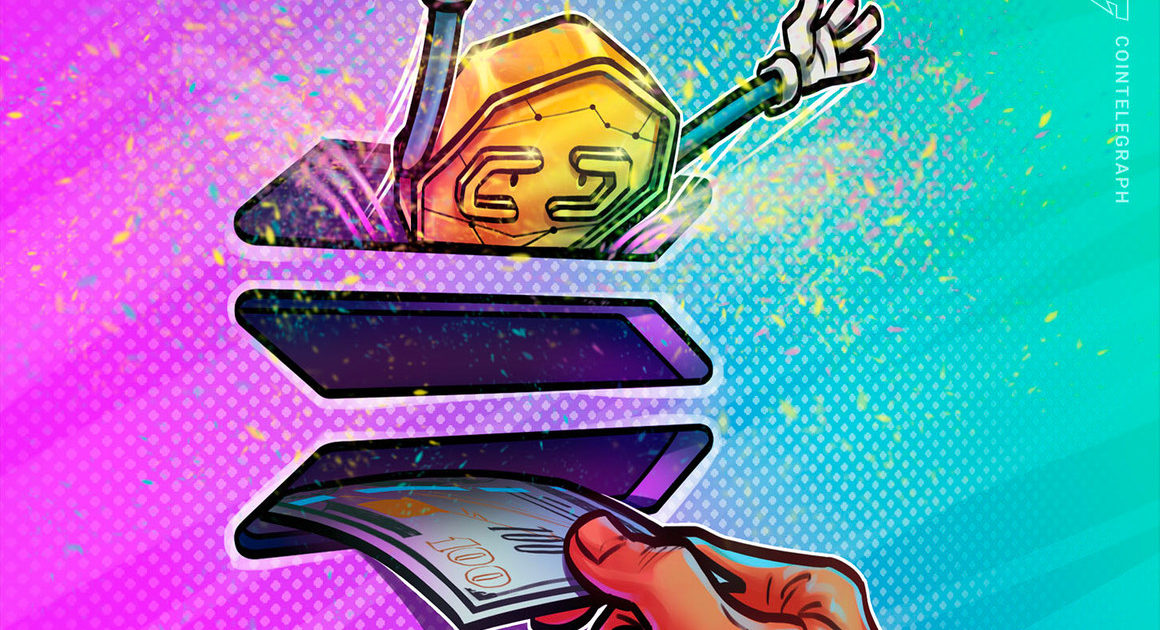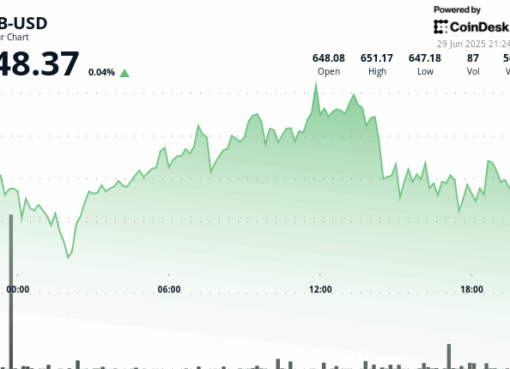Like most new-age networks, Solana was developed to resolve major issues confronting the blockchain industry. While the network has addressed some of these issues by its very nature. However, it has also encountered a few unique problems.
From resource exhaustion to a halt in block confirmation, the Solana network has suffered a number of setbacks that resulted in repeated power outages, causing the network to shut down for hours on several occasions.
The network went down on December 4, 2020, about three years after Solana was introduced, causing confusion in the community.
The chain appears to have stopped validating new blocks at slot 53,180,900, preventing transaction confirmations. The network engineers discovered and fixed the problem, but it had been down for approximately six hours.
Furthermore, on September 14, 2021, the official Solana Support Twitter handle revealed that the network had been experiencing “intermittent instability” for approximately 45 minutes.
According to the report, resource exhaustion was a likely cause of the issue that resulted in a denial of service. According to the support handle, the engineers were working on the issue and looking into the possibility of a restart if it persisted.
The network recently experienced another outage, making it the seventh time that it has been disrupted. This time, the problem was caused by bots initiating a large number of transactions on Metaplex, a nonfungible token (NFT) marketplace built on Solana. The outage lasted approximately seven hours.
Currently, the Solana validators are being slowed down, according to George Harrap, co-founder of Step Finance — a Solana portfolio manager — because bots are spamming NFT mint and arbitrage transactions. These have immense bandwidth requirements, so a significant number has an impact.
“Solana is not a centralized entity with one person who can make decisions. It’s up to the 1700+ validators to decide what to do. Many of them are implementing fixes and reaching consensus on what is to be done in the best interests of the network,” Harrap told Cryptox. He said:
“According to Nansen research, there are often 10-times more transactions on Solana than Ethereum. This means Solana is dealing with demands not faced by other blockchains and this is new territory. So, hiccups are expected.”
While Ethereum’s OpenSea has been one of the most well-known NFT marketplaces thus far, Metaplex, built on the Solana network, is gradually gaining traction and allowing users to mint and sell NFTs on the Solana blockchain.
Given the recent marketplace issue and Solana’s persistent blackouts, however, it would not be surprising if some users begin to reconsider.
Harrap added that “there are currently some validator node updates in the pipeline and under research to fix this. This is mainly in the form of new communication protocols between nodes (like QUIC) and changes to the Candy Machine contract used by NFT minters where failed transactions incur a fee.”
Solana seeks to address the blockchain trilemma
Solana went fully operational two years ago. The network is considered to be one of the Ethereum killers by the crypto community. These Ethereum killers are networks that aim to outperform the Ethereum blockchain in terms of adoption by addressing some issues that have arisen as a result of the Ethereum blockchain’s current heavy reliance on the proof-of-work (PoW) consensus mechanism.
Solana was designed with the blockchain trilemma in mind, a concept proposed by Vitalik Buterin, a Canadian-Russian programmer and co-founder of Ethereum.
According to the blockchain trilemma, while decentralization, security and scalability are the three main features of a successful blockchain, a typical blockchain would only be able to provide two of them while sacrificing one.
The Solana network aims to address this by incorporating a proof-of-history (PoH) mechanism into a proof-of-stake (PoS) blockchain. With PoH, the network delegates a central node to determine a transaction time that the entire network can agree on. This speeds up transactions, but it sacrifices decentralization, which is a key feature of a blockchain.
According to Hisham Khan, founder and CEO of Aldrin, users have turned to layer 2s and other layer 1s like Avalanche as well as temporary solutions to Ethereum. But, it doesn’t really solve the current scalability issues, transaction costs and speed. He told Cryptox:
“If you look at the transactions per second, Solana ranks consistently in the top five. To gauge how promising an ecosystem is, look at the number of developers. Unsurprisingly, Solana continues to grow with the most developers joining.”
“Scalability and stress tests are a necessary part of the process to shape the ecosystem to maturity — we are not just dealing with financial transactions but initial DEX offerings, NFTs, bots and much more,” Khan said, “All these issues might not exist in five years. And, just like the early days of the internet, the user experience and backend still have room for improvement. While users may not notice the difference, there will be a smoother process as underlying smart contracts and technology continues to be developed.”
Concerns have been raised about whether the Solana network is truly decentralized. While most crypto enthusiasts acknowledge the network’s low fees and notable scalability, they argue that the network is not completely decentralized, citing its reliance on PoH, nearly 50% token allocation to insiders and reliance on the Solana Foundation for core node development.
And, despite all this, its scalability still appears to be in doubt. In early January 2021, the official Solana Support Twitter page acknowledged a decrease in performance, which translates to a decrease in transaction throughput across the network. According to the tweet, the network capacity was reduced to “several thousand transactions per second,” causing some users’ transactions to fail.
Related: The birth of ‘Ethereum killers’: Can they take Ethereum’s throne?
Solana employs the proof-of-stake mechanism, which means that users can stake their native coin Solana (SOL) in the pool to earn rewards. These coins are then commissioned to validators in order to increase their polling influence in the blockchain consensus. This quickly confirms the transaction sequence produced by the ongoing PoH generator, selects new PoH generators and penalizes mischievous validators.
While many users have taken advantage of the Solana staking opportunity, particularly as a side income source, a few users on the official Solana Reddit channel have reported issues staking their SOL using Moonlet wallet and Solana’s Phantom wallet.
A long way to go
The Solana ecosystem has produced a number of decentralized applications (DApps), including lending protocols such as Apricot Finance and Francium, decentralized finance (DeFi) projects such as Orca, Saber, and Raydium, NFT marketplaces such as Metaplex and Solanart and Web3 apps such as Audius and the Brave Browser.
However, with only 71 projects, the ecosystem falls far short of major ecosystems such as Ethereum’s, which has approximately 3,249 projects.
Orca, a decentralized exchange on the Solana blockchain, has been the most used DApp on the Solana ecosystem in the last seven days. Orca has a user base of 272,000 people, while NFT Marketplace Magic Eden comes in second place with 121,000 users.
In contrast, while the most popular DApp on the Ethereum ecosystem in the last seven days has been NFT Marketplace OpenSea with approximately 148,000 users, the Ethereum ecosystem’s total value locked (TVL) is far above its rival’s with a value of $113 billion, according to DeFi TVL aggregator platform DeFiLlama. Solana has a TVL of $6 billion.
The low fees that the Solana network promises have enticed developers and users alike, but frequent network outages have hampered full network utilization and scared away some potential stakeholders that have stunted the ecosystem’s growth.
Promising upgrades ahead
In response to these concerns, Solana Labs — the technology firm behind the Solana blockchain — has revealed plans for “flow control” upgrades that will potentially address these growing network outage concerns.
Austin Federa, head of communications of Solana Labs, hosted CEO Anatoly Yakovenko and other members of the Solana development team on Twitter earlier this year in a Twitter Spaces session to discuss possible solutions. This came after the network experienced several blackouts in January alone, causing users to become concerned.
Yakovenko stated during the session that plans are in the works to implement upgrades to assist in dealing with these issues and that they will be rolled out in the coming weeks. He also pointed out that some of them had already been implemented.
Recent: Largest NFT mint ever: Making sense of Yuga Lab’s ‘virtual’ land bonanza
It would not be out of place to expect a significant improvement in Solana chain stability in the coming months, owing largely to the fact that it is still in its infancy and should be given some time to develop. However, the problems appear to be majorly unique to the network, raising questions about whether they will be ultimately resolved within the crypto space.
In a more technical sense, one could argue that the current release is still in the beta phase and that the full release will include upgrades to address these issues. However, in response to a Reddit post, a Solana moderator revealed that the “beta” attached is “just a word that could be removed at any time.”
In April 2021, there were proposals to implement an on-chain governance protocol to allow coin holders to influence the chain’s upgrade democratically. This would aid in the delegation of upgrade decisions to holders and stakers.
Solana is expanding, and with a market cap of $30 billion, the native coin SOL has risen to sixth place among the most valuable digital assets.
According to a recent Finder poll, the price of SOL is expected to reach $222 by the end of the year. Despite the outages that appear to be unique to the network, the rapid growth of the ecosystem has given reason to believe that Solana could one day become one of the dominant PoS chains. Harp concluded:
“Solana isn’t strictly a PoS consensus like other PoS systems, rather it is trying something new. Whether it will stand the test of time and scale remains to be seen.”




